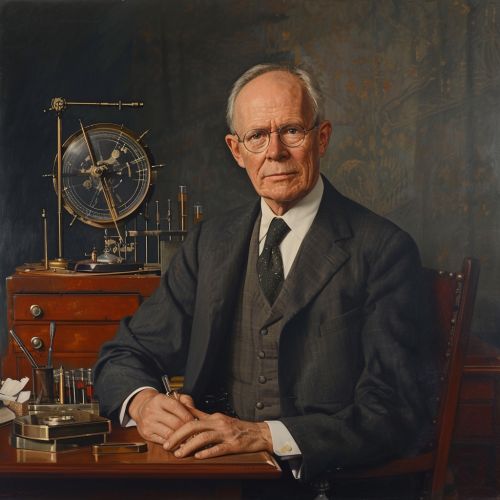Torbern Bergman
Early Life and Education
Torbern Olof Bergman was born on March 20, 1735, in Katrineberg, Sweden. He was the son of Barthold Bergman, a clergyman, and Sara Hägg. Bergman showed an early interest in natural sciences, particularly in chemistry and mineralogy. He attended the University of Uppsala, where he initially studied mathematics and physics under the guidance of prominent professors such as Anders Celsius and Samuel Klingenstierna. However, Bergman soon shifted his focus to chemistry, inspired by the works of Georg Brandt and Carl Wilhelm Scheele.
Academic Career
Early Research
Bergman's early research was primarily in the field of mineralogy. He conducted extensive studies on various minerals and their chemical compositions. His work on the analysis of baryte and gypsum laid the foundation for future research in the field. Bergman was particularly interested in the crystallization processes of minerals, and his meticulous observations contributed significantly to the understanding of crystal structures.
Professorship at Uppsala
In 1767, Bergman was appointed as a professor of chemistry and mineralogy at the University of Uppsala. During his tenure, he made substantial contributions to the field of analytical chemistry. Bergman developed several innovative techniques for the qualitative and quantitative analysis of chemical substances. His work on the classification of minerals based on their chemical properties was groundbreaking and influenced subsequent generations of chemists.


Contributions to Chemistry
Analytical Chemistry
Bergman is often regarded as one of the pioneers of analytical chemistry. He introduced systematic methods for the analysis of chemical compounds, which included procedures for titration and gravimetric analysis. His meticulous approach to chemical analysis set new standards for accuracy and precision in the field. Bergman's work on the analysis of metallic oxides and salts was particularly influential, providing a deeper understanding of their chemical properties and reactions.
Chemical Affinity
One of Bergman's most significant contributions to chemistry was his work on chemical affinity. He developed a comprehensive theory to explain the forces that govern chemical reactions. Bergman's affinity tables, which ranked substances based on their tendency to react with one another, were widely used by chemists for many years. His research on chemical affinity also laid the groundwork for the development of modern thermodynamics.
Mineralogy
Bergman's contributions to mineralogy were equally noteworthy. He conducted extensive studies on the classification and properties of minerals. His work on the crystallization of minerals provided valuable insights into their formation and structure. Bergman also identified several new minerals, including wollastonite and scheelite, which were named in his honor.
Publications
Bergman was a prolific writer, and his publications had a significant impact on the field of chemistry. Some of his most notable works include:
- "Disquisitio de Attractionibus Electivis" (1775) - A comprehensive treatise on chemical affinity.
- "Opuscula Physica et Chemica" (1779) - A collection of his research papers on various topics in chemistry and mineralogy.
- "De Analysi Aquarum" (1780) - A detailed study on the analysis of water and its chemical properties.
Legacy
Torbern Bergman's contributions to chemistry and mineralogy have left a lasting legacy. His systematic approach to chemical analysis and his pioneering work on chemical affinity have had a profound influence on the development of modern chemistry. Bergman's affinity tables and analytical techniques are still referenced and used by chemists today. His work also paved the way for future research in the fields of mineralogy and crystallography.
See Also
- Carl Wilhelm Scheele
- Georg Brandt
- Anders Celsius
- Samuel Klingenstierna
- Analytical Chemistry
- Chemical Affinity
- Mineralogy
